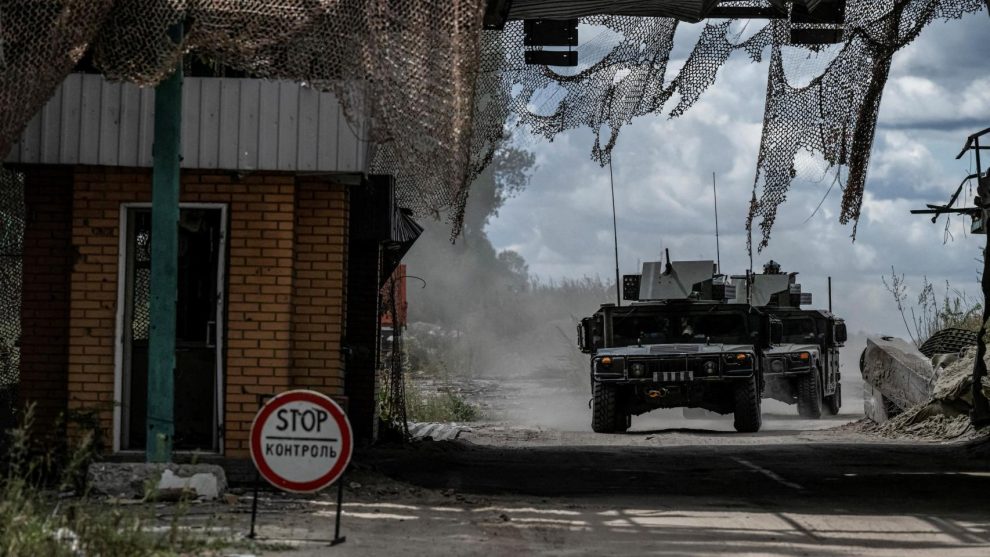Ukrainian President, Volodomir Zelenskywas the special guest at the meeting of the Rammstein Contact Group, formed by the defense ministers of the NATO countries. Supported by the American Secretary of Defense, Lloyd Austinand by its German counterpart, Boris PistoriusZelensky called on his allies to make greater efforts to “end the war by autumn and restore international legality,” something that seems more like a wish than a realistic goal.
Zelensky was particularly insistent on his country’s needs in terms of anti-aircraft defence. The latest Russian bombings of civilian targets in Lviv, Kharkiv and Dnipropetrovsk are the cruelest expression of a problem that Ukraine has been dragging on since the beginning of the war: Patriot anti-missile batteries arrived too late and in too few numbers. Both Zelensky and the former foreign minister, Dmitro ZulebaThey spent months begging for at least seven more batteries to stop the air drain, but with little success.
Ukraine has also repeatedly asked the United States to allow it to use its long-range missiles to attack military targets inside Russian territory in order to eliminate the problem at its source. The United States has only agreed to limited strikes on very specific positions in the Belgorod region and has always been reluctant to extend this permission for fear of a nuclear escalation. Other partners such as France and the United Kingdom do not see the situation in the same way, but are forced to follow the American policy in order not to break up the union bloc.
Zelensky also took advantage of his visit to Rammstein to defend the offensive on Kursk, which was not consulted with any allied country. precisely for fear that it would be rejected and conveniently leaked to the pressThe Ukrainian president said that 6,000 enemy soldiers had been killed or wounded so far in the operation and claimed to already have control of more than 100 towns and around 1,300 square kilometres of Russian territory.
The right strategy
General Oleksandr Syrskyi, head of the Ukrainian armed forces, made similar statements in an interview with . Syrskyi also claimed responsibility for the offensive on the Russian region of Kursk in the face of attacks that link the offensive to the recent losses in Donbas and dissociated the two situations: according to his version of events, the problems on the eastern front were earlier and the incursion into Russian territory has only alleviated them.
Specifically, according to Syrskyi, the operation would have revitalized the morale of his soldiers, which had been weakened by the difficulties in coping with new mass mobilizations and by the obvious lack of preparation of the new recruits, and would have allowed the pressure on some enclaves in the Donetsk region to be eased. Syrskyi acknowledges that The idea was to force Russia to mobilize more men to recover the ground lost at Kursk. And although it has not been achieved 100%, he is still satisfied with the result.
“The strategy was correct,” Syrskyi told the US broadcaster. “Even though Russia has kept its most experienced troops around Pokrovsk, it has at least had to divert support units that were shoring up other positions, and that is very noticeable.” In other words, the pressure on the front line may seem the same, but the fact that the rear has been depleted means fewer rotations, more problems with supply chains and more exhaustion among the soldiers left behind in Ukraine.
New York resists Putin
As an example, Syrskyi repeated a statement made by Zelensky a few days earlier: “In the last week, Russia has not advanced a single kilometer towards Pokrovsk.” The statement is true, but misleading. Russia advanced at high speed in the last week of August from Ocheretyne along the T0511 to the village of Hrodivka, about ten kilometers from Pokrovsk. Since the beginning of the month, the situation has come to a complete standstill.
Whether this pause is a matter of necessity, as seems to be the case at Chasiv Yar, Toretsk or even Niu York, where the 12th Azov Brigade is even regaining ground from the Russians, or whether it is a strategic matter, remains to be seen. Because the fact is that Gerasimov’s army is indeed advancing in other directions around Pokrovsk, and at an alarming rate. In particular, Russia seeks to seize the southern cities of Selydove, Ukrainsk and Kurajovewhose conquest would allow a safer advance and protect the rear.
There has also been progress on the T0509 road, which leads to the large city south-west of Donetsk still in Ukrainian hands: Velyka Novosilka. The Russians already control Prechystivka, just twenty kilometres from what seems to be their other major objective, where the southern front and the eastern front could join up. The question is whether they will prefer to advance little by little and take the cities in their path or if they will launch themselves along the N15 and the aforementioned T0509, dividing the Ukrainian defence into different parts… but at the same time opening up very unprotected flanks in their rear.
The logical thing to do would be to try to seize these enclaves before closing in on frontal attacks on Vuhledar – where every Russian attempt continues to end in carnage for its own ranks – and Pokrovsk. On the other hand, it would also be the slowest and most costly. That is the dilemma that the Kremlin is now faced with: to look for faster and more dangerous alternatives to make a splash before the autumn rains and possible peace negotiations or to continue inch by inch in a war of attrition that never stops counting bodies.













Add Comment